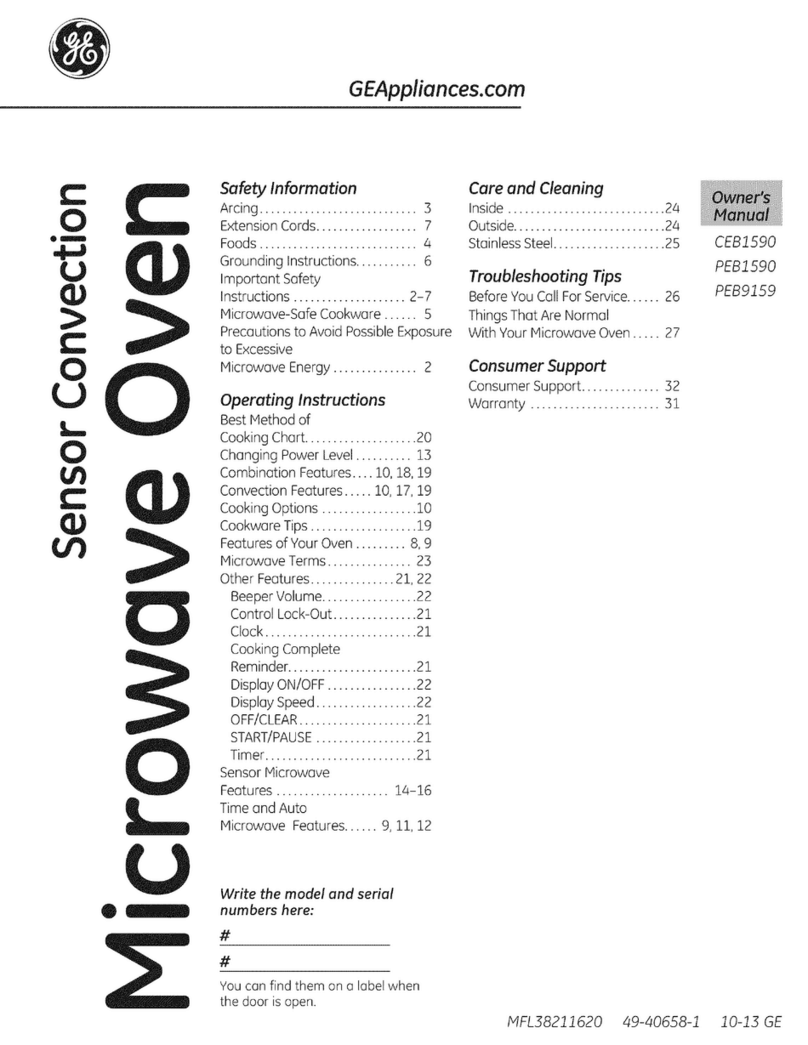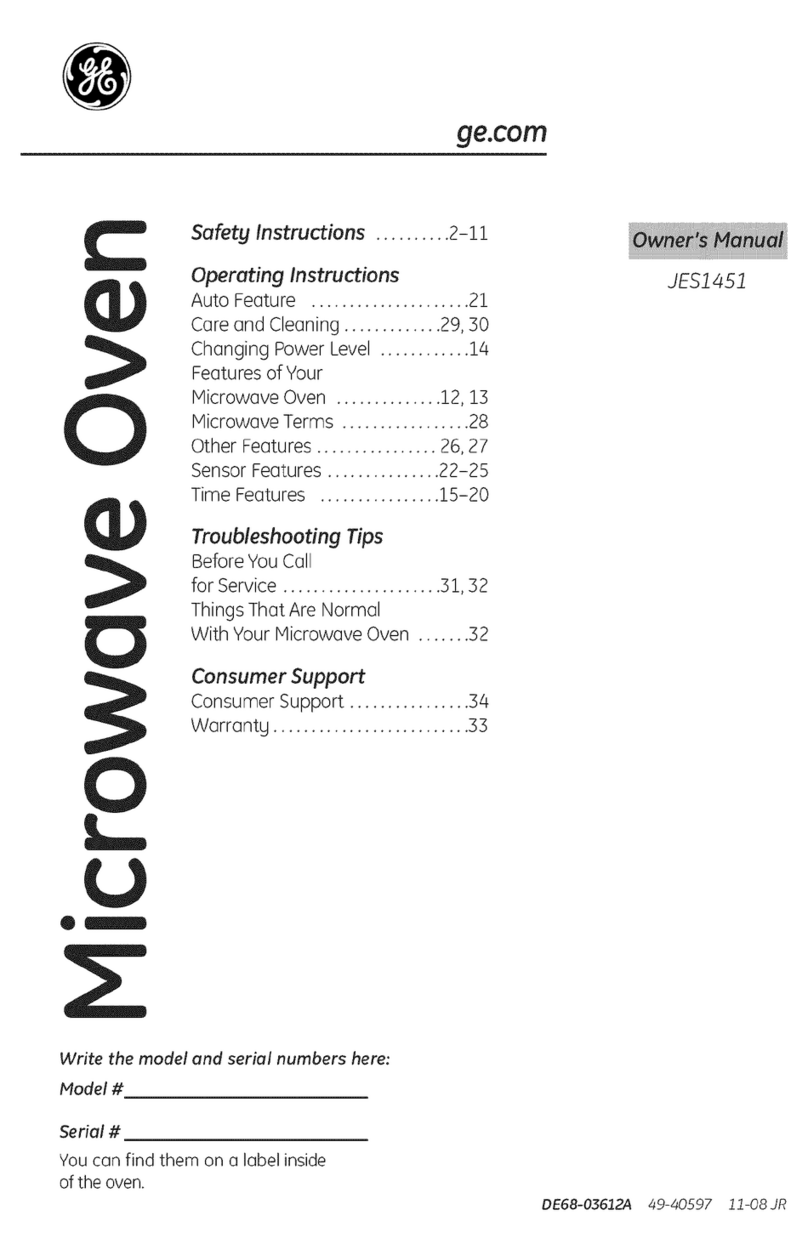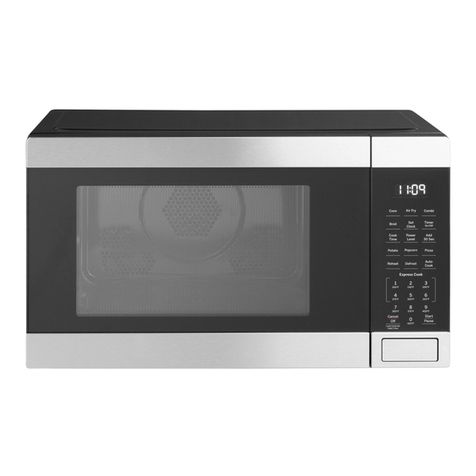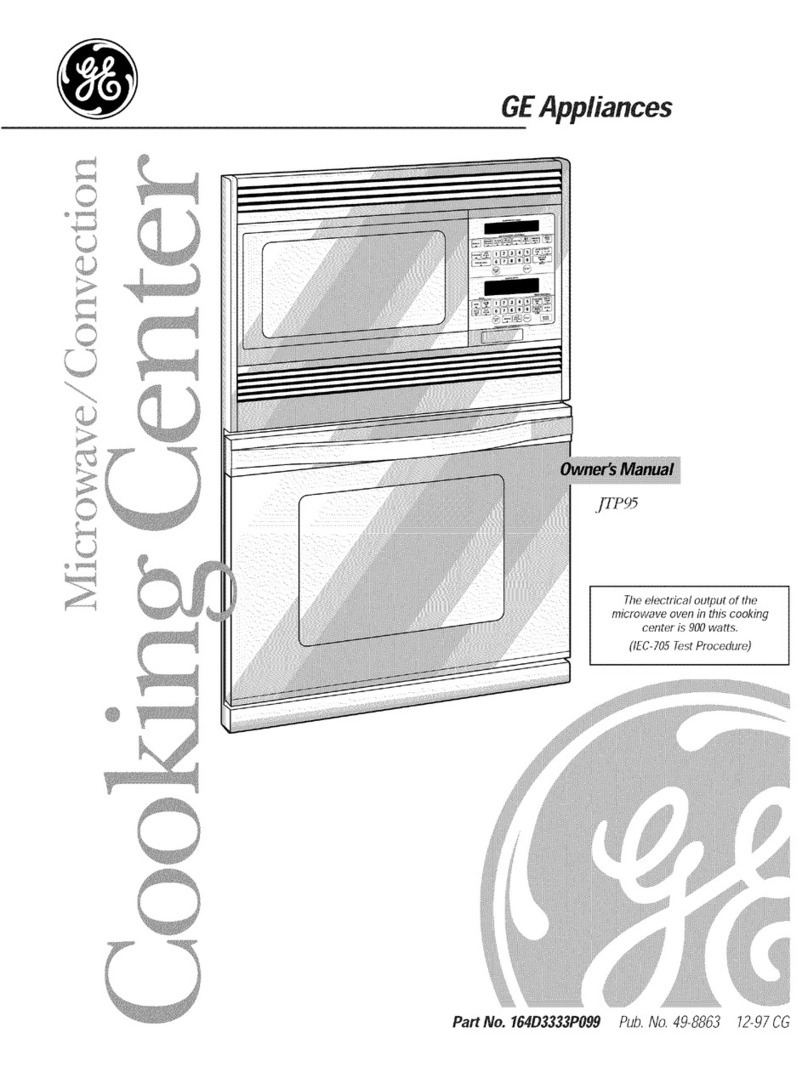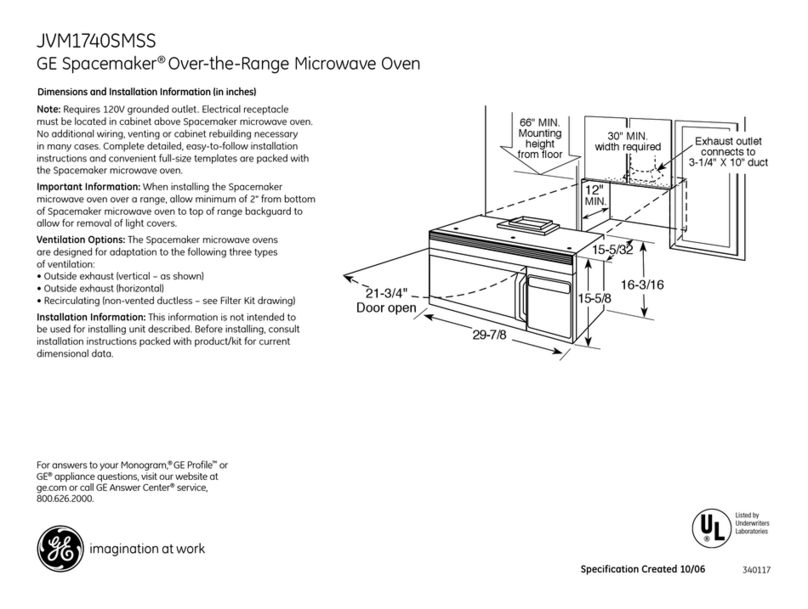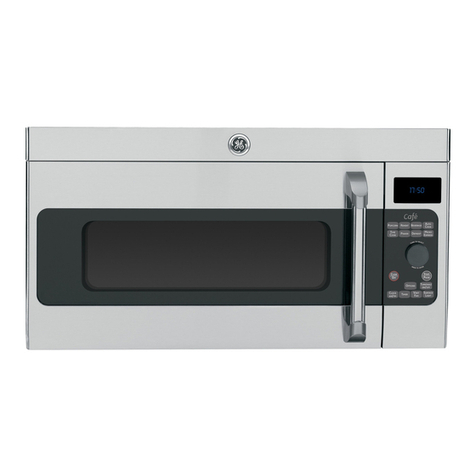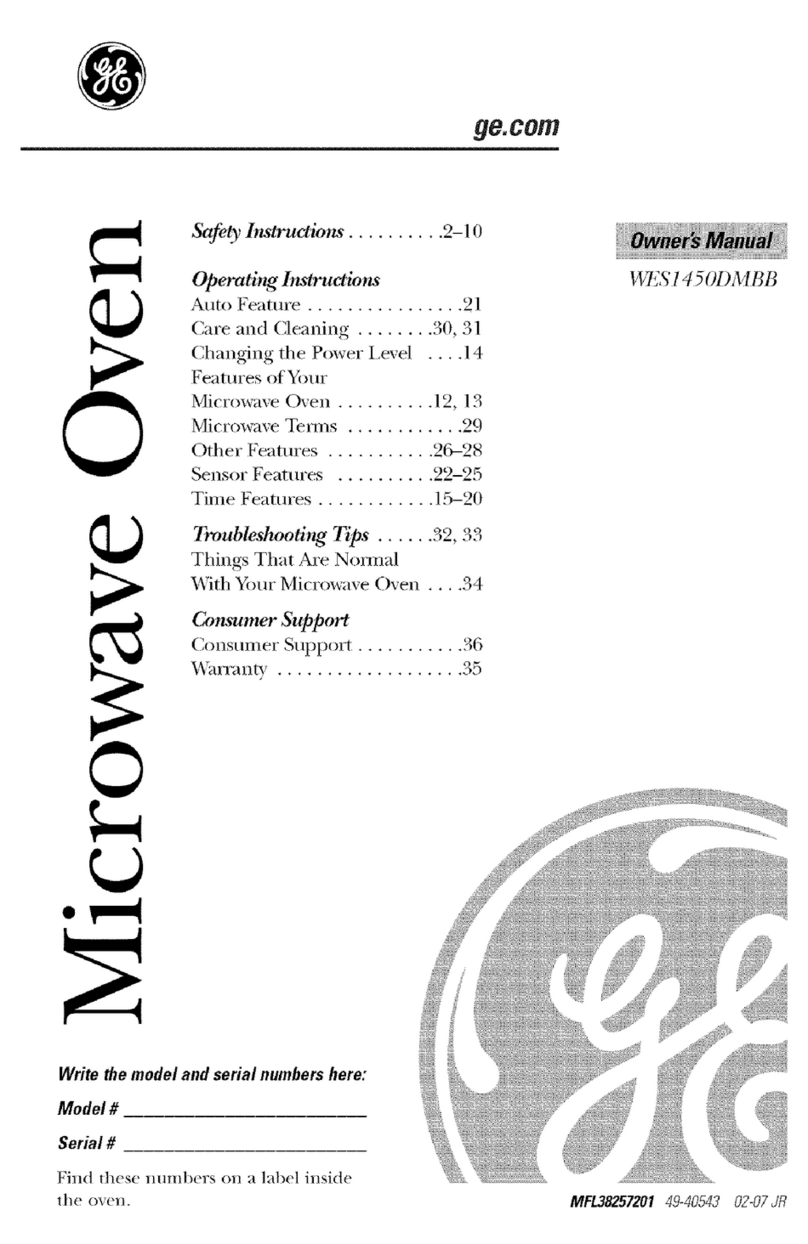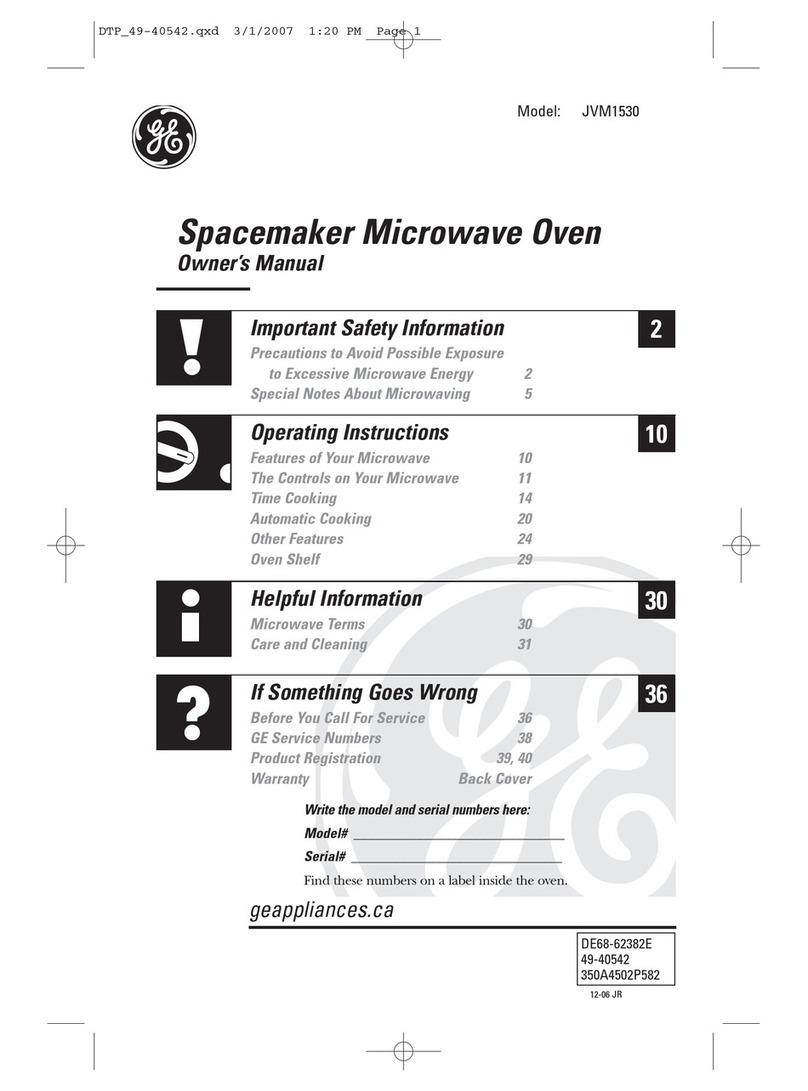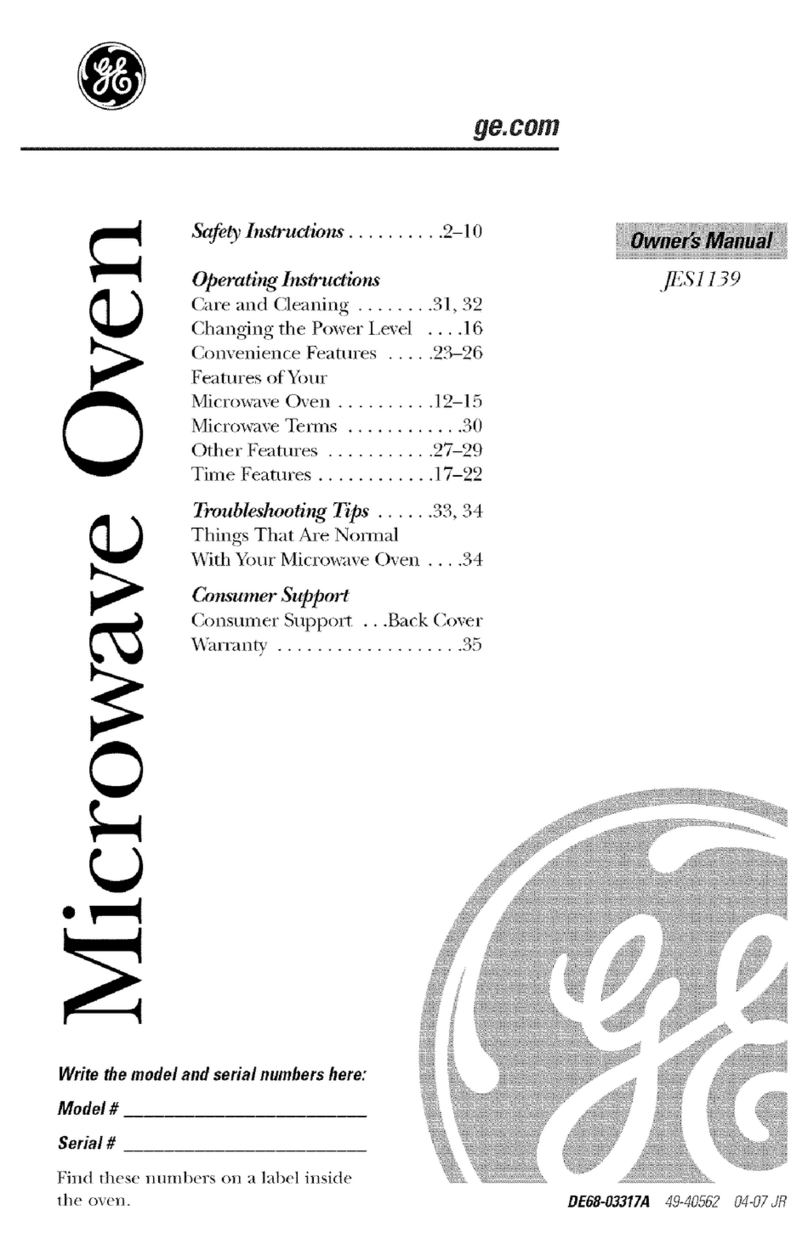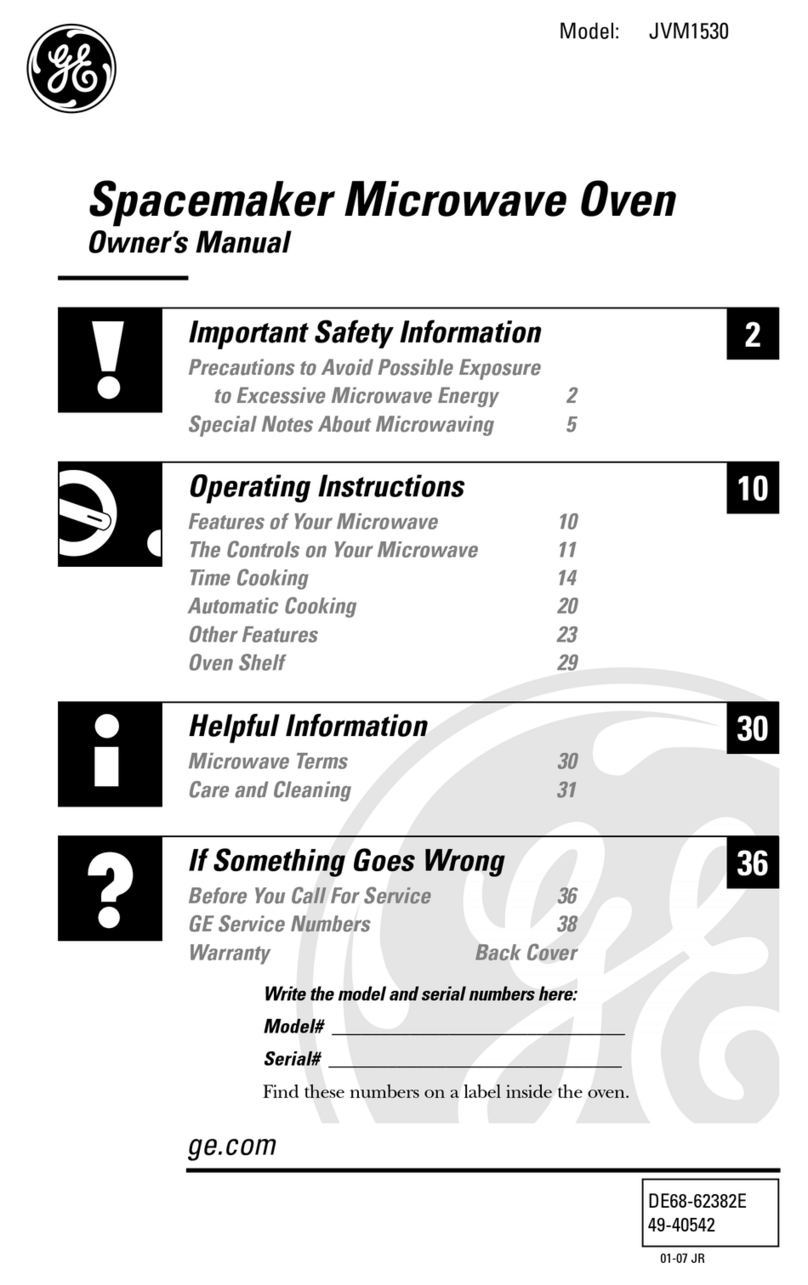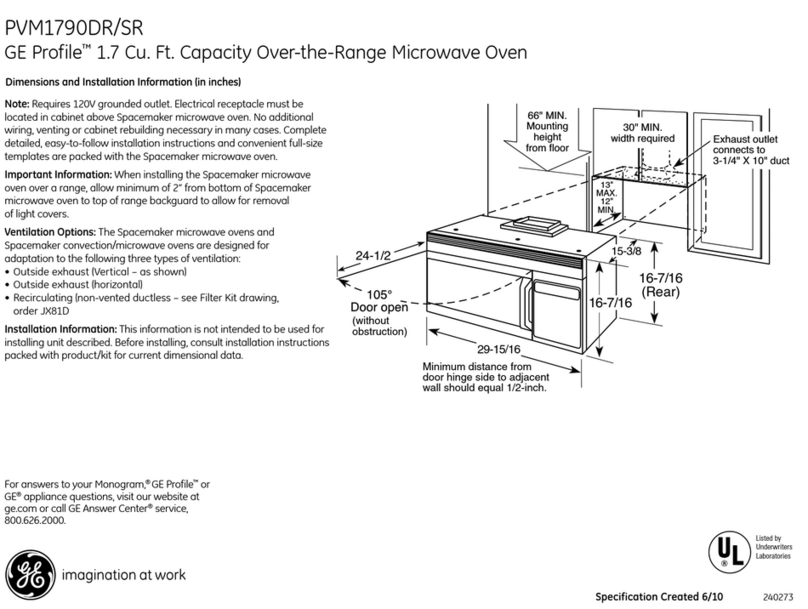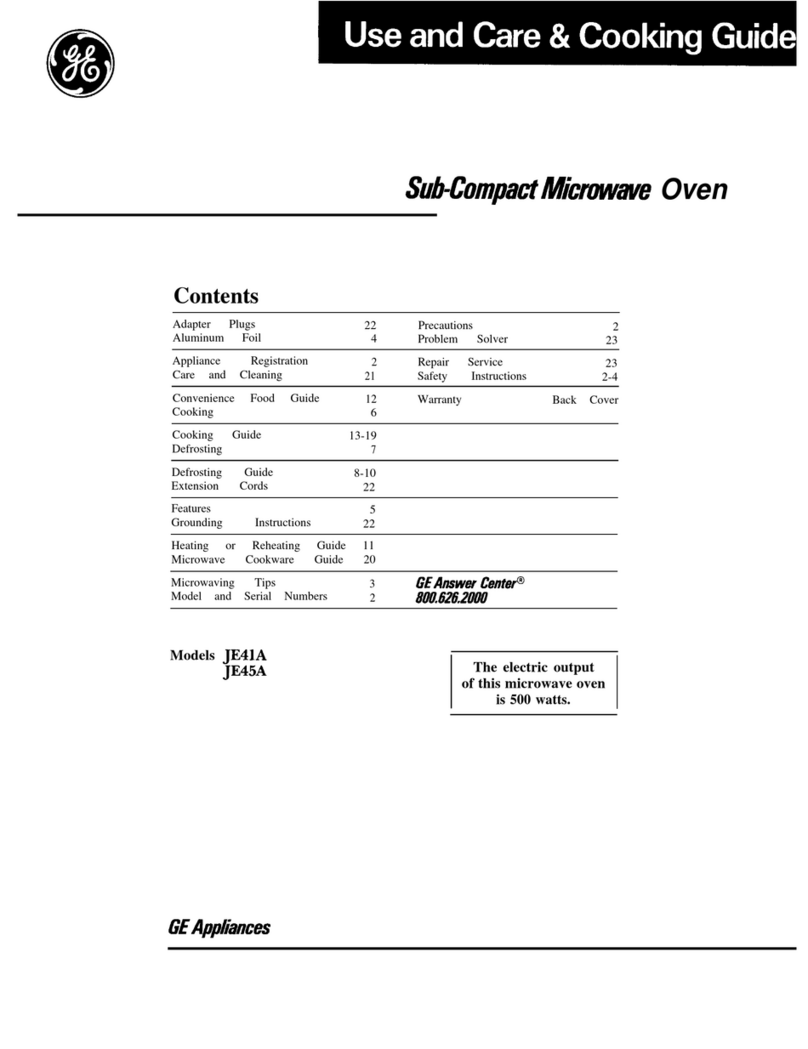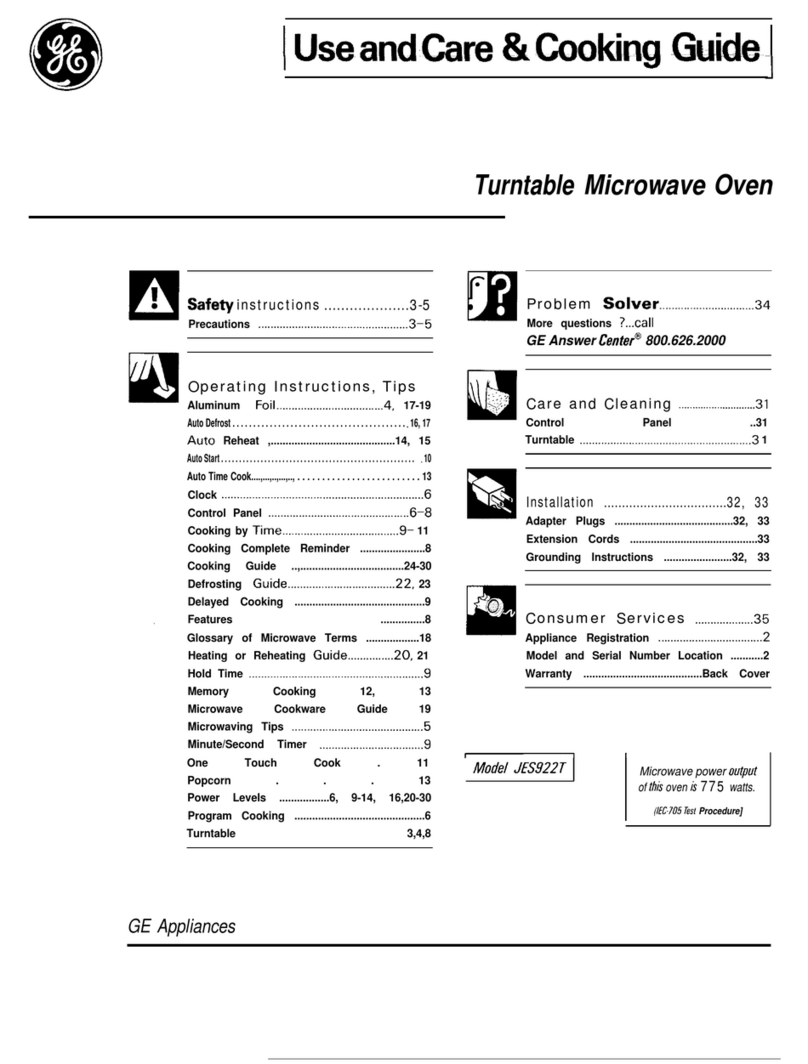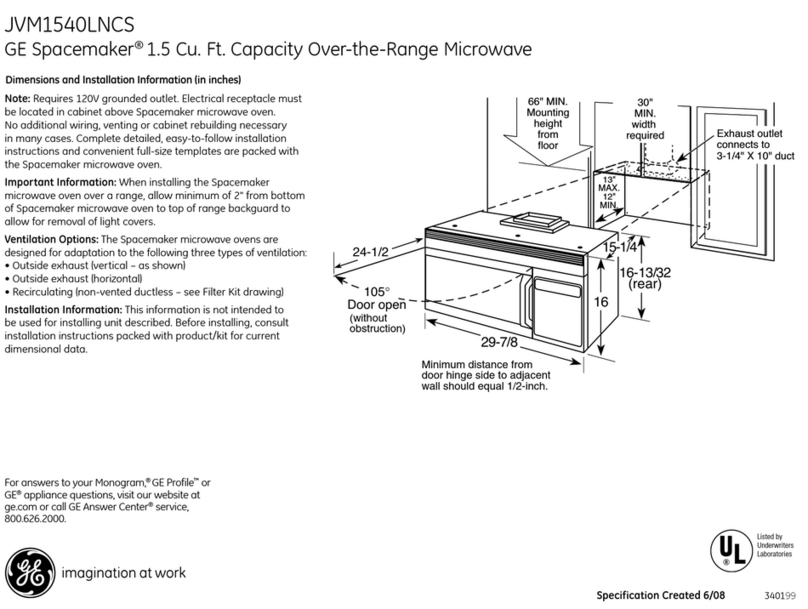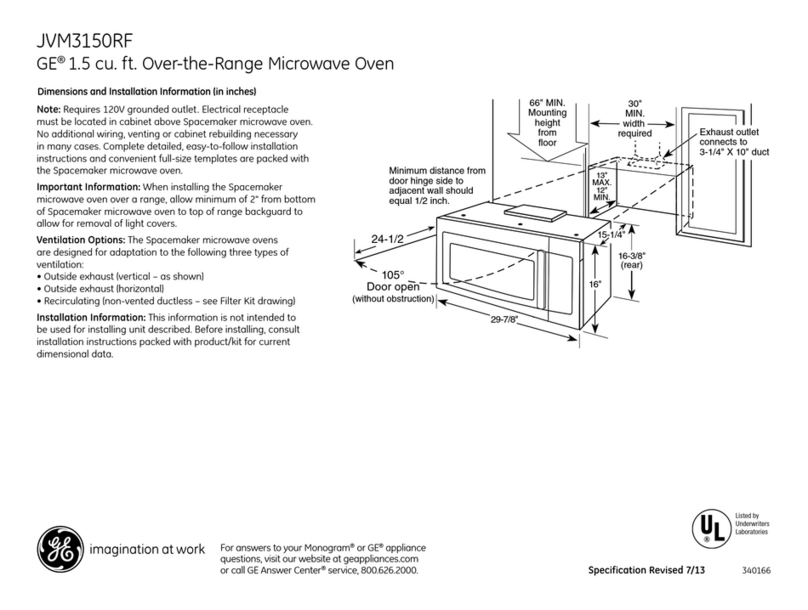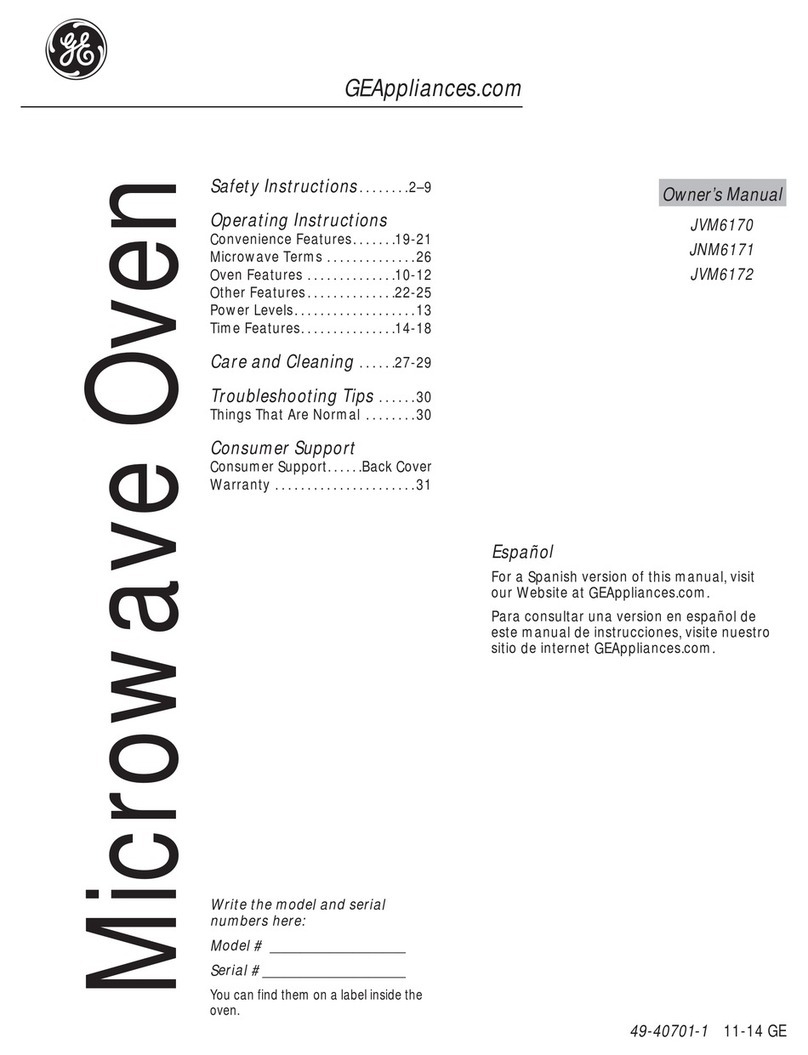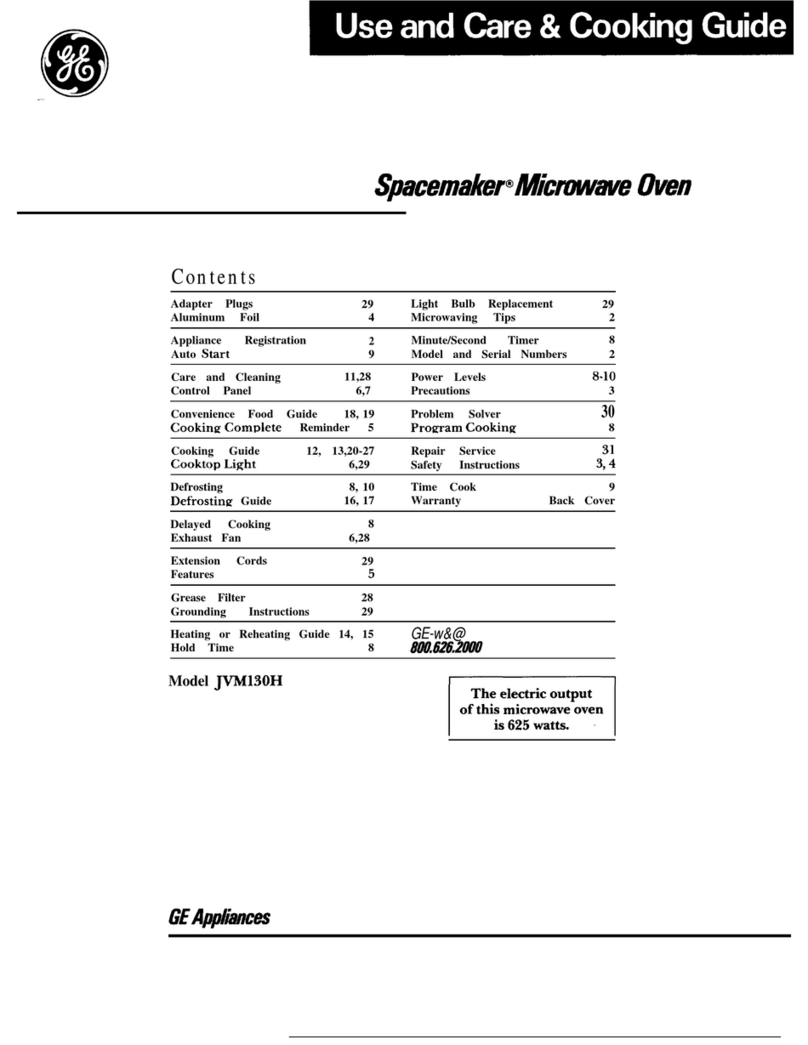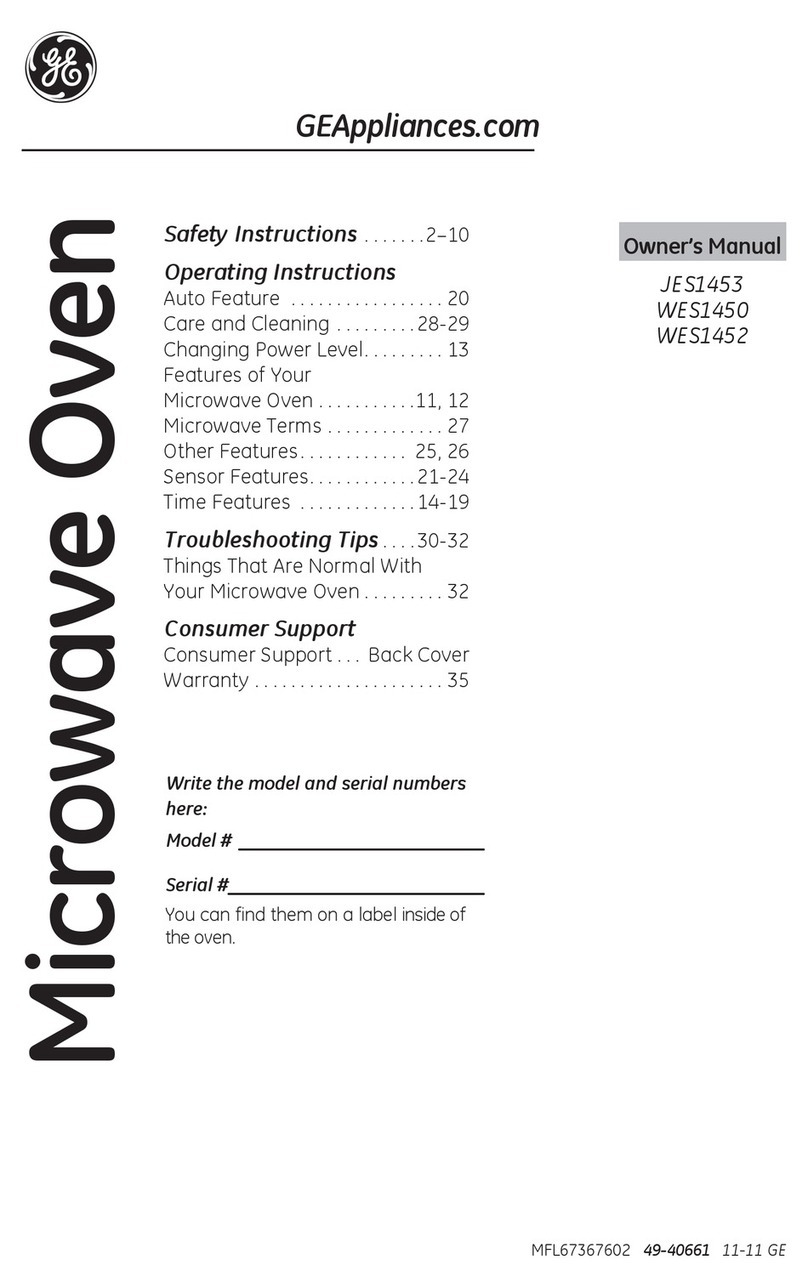Safety Instructions Operating Instructions Care and Cleaning Troubleshooting Tips Customer Service
■Do not store this appliance outdoors.
Do not use this product near water—for
example, in a wet basement, or near a
swimming pool.
■This appliance should be serviced only by
qualified service personnel. Contact nearest
authorized service facility for examination,
repair or adjustment. Do not repair or
replace any part of this appliance unless
specifically recommended in this manual.
All other servicing should be referred to
a qualified technician.
■Before performing any service, disconnect
the cooking center power supply at the
household distribution panel by removing
the fuse or switching off the circuit breaker.
■Do not operate this appliance if it has a
damaged cord or plug, if it is not working
properly, or if it has been damaged or
dropped.
■Do not leave children alone—children
should not be left alone or unattended in
an area where appliance is in use. They
should never be allowed to sit or stand on
any part of the appliance.
■Don’t allow anyone to climb, stand or
hang on the door. They could damage
the cooking center and cause severe
personal injury.
■
CAUTION:
Items of interest to children
should not be stored in cabinets above an
oven; children climbing on the oven to
reach items could be seriously injured.
■Teach children not to play with the controls
or any other part of the cooking center.
■Wear proper clothing. Loose fitting or
hanging garments should never be worn
while using the appliance. Flammable
material could be ignited if brought in
contact with hot heating elements and may
cause severe burns.
■Use only dry pot holders—moist or damp
pot holders on hot surfaces may result in
burns from steam. Do not let pot holders
touch hot heating elements. Do not use a
towel or other bulky cloth. Such cloths can
catch fire on a hot element.
■Always keep dish towels, dish cloths, pot
holders, and other linens a safe distance
from your oven.
■Always keep wooden spoons and plastic
utensils and canned food a safe distance
away from your oven.
■Always keep combustible wall coverings,
curtains or drapes a safe distance from
your oven.
■Do not store flammable material in an oven
or near the cooking center.
■Do not cover or block any openings on the
appliance.
■For your safety, never use your appliance
for warming or heating the room.
■Do not leave paper products, cooking
utensils, or food in the oven when not
in use.
■Do not store or use combustible materials,
gasoline or other flammable vapors and
liquids in the vicinity of this or any other
appliance.
■Do not let cooking grease or other
flammable materials accumulate in or
near the cooking center.
■Do not touch heating elements or interior
surface of the oven. These surfaces may be
hot enough to burn even though they are
dark in color. During and after use, do not
touch, or let clothing or other flammable
materials contact any interior area of the
oven; allow sufficient time for cooling first.
■Potentially hot surfaces include oven vent
openings, surfaces near the openings, and
crevices around the oven door.
■
REMEMBER:
The inside surface of the oven
may be hot when the door is opened.
■Do not use water on grease fires. Never pick
up a flaming pan. Smother flaming pan on
surface unit by covering pan completely
with well-fitting lid, cookie sheet or flat tray.
Flaming grease outside a pan can be put out
by covering with baking soda or, if available,
a multi-purpose dry chemical or foam-type
fire extinguisher.
3

